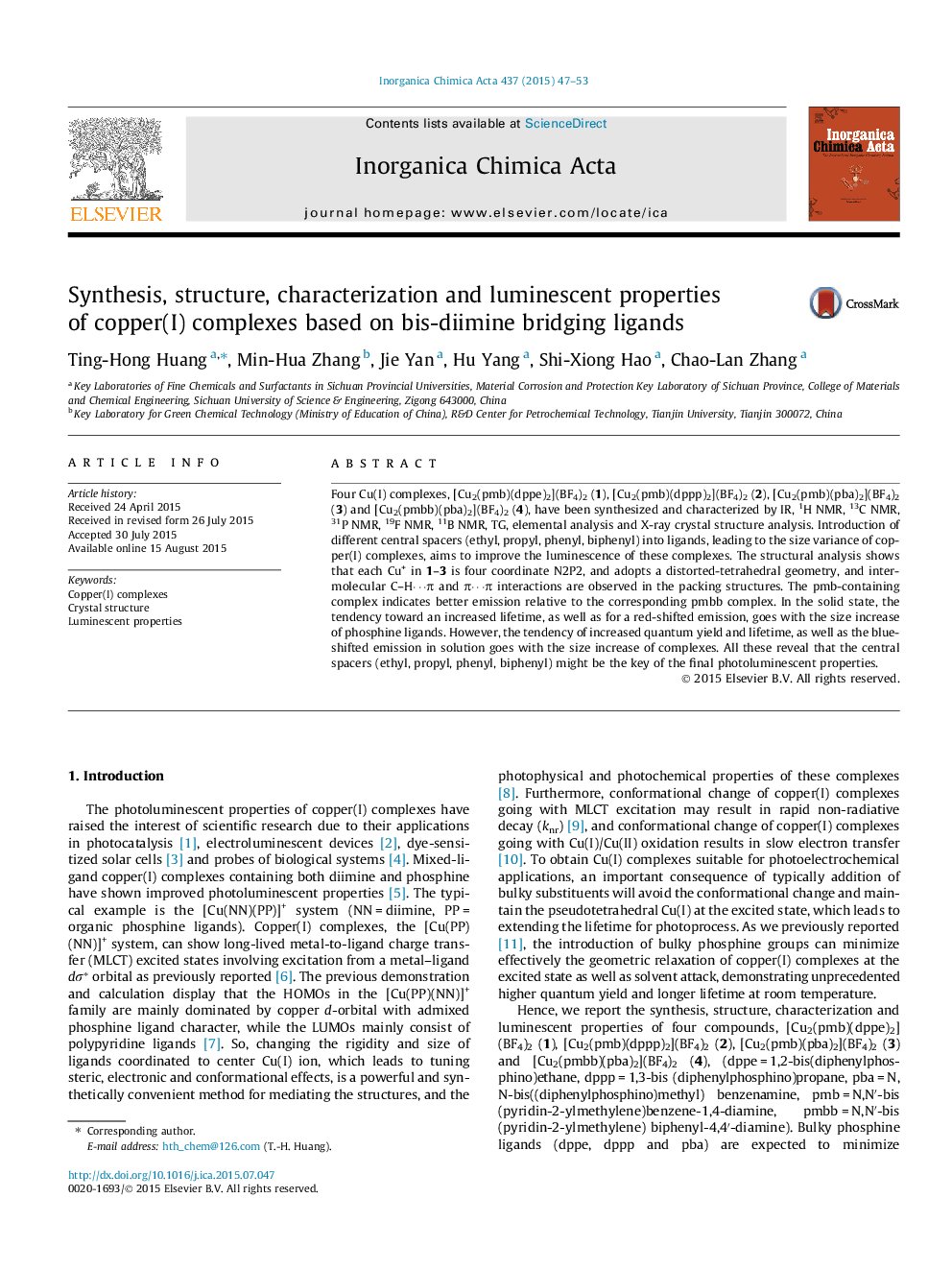| Article ID | Journal | Published Year | Pages | File Type |
|---|---|---|---|---|
| 1308788 | Inorganica Chimica Acta | 2015 | 7 Pages |
•Four copper(I) compounds, the [Cu(PP)(NN)]+ system, have been prepared and characterized.•Some of the complexes contain intermolecular C–H⋯π and π⋯π interactions.•The central spacers (ethyl, propyl, phenyl, biphenyl) may be the key of the final photoluminescent properties.
Four Cu(I) complexes, [Cu2(pmb)(dppe)2](BF4)2 (1), [Cu2(pmb)(dppp)2](BF4)2 (2), [Cu2(pmb)(pba)2](BF4)2 (3) and [Cu2(pmbb)(pba)2](BF4)2 (4), have been synthesized and characterized by IR, 1H NMR, 13C NMR, 31P NMR, 19F NMR, 11B NMR, TG, elemental analysis and X-ray crystal structure analysis. Introduction of different central spacers (ethyl, propyl, phenyl, biphenyl) into ligands, leading to the size variance of copper(I) complexes, aims to improve the luminescence of these complexes. The structural analysis shows that each Cu+ in 1–3 is four coordinate N2P2, and adopts a distorted-tetrahedral geometry, and intermolecular C–H⋯π and π⋯π interactions are observed in the packing structures. The pmb-containing complex indicates better emission relative to the corresponding pmbb complex. In the solid state, the tendency toward an increased lifetime, as well as for a red-shifted emission, goes with the size increase of phosphine ligands. However, the tendency of increased quantum yield and lifetime, as well as the blue-shifted emission in solution goes with the size increase of complexes. All these reveal that the central spacers (ethyl, propyl, phenyl, biphenyl) might be the key of the final photoluminescent properties.
Graphical abstractFour copper(I) complexes, the [Cu(PP)(NN)]+ system, have been synthesized and characterized. Introduction of different central spacers (ethyl, propyl, phenyl, biphenyl) into ligands, leading to the size variance of copper(I) complexes, aims to improve the luminescence of these complexes.Figure optionsDownload full-size imageDownload as PowerPoint slide
